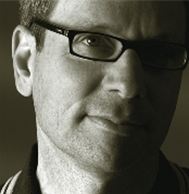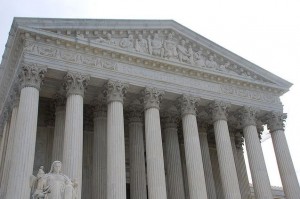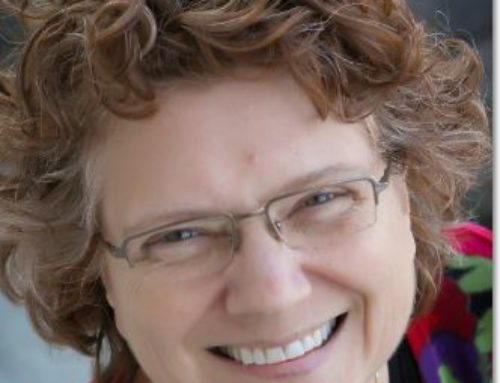HETL Note: We are pleased to present this feature article by Dr. David S. Goldstein, entitled “Feeding the Pipeline: Helping Students of Color Write College Entrance Essays for the University 2.0” which opens a new dialogue on our pages about how best to support potential university entrants from disadvantaged communities in their strive to reach above the academic admission bar and achieve their dream. Based on his knowledge and experience, Dr. Goldstein describes and discusses the strategies evolving in this area. More about Dr. Goldstein’s work and achievement can be found at The University of Washington, Bothell site and also at his faculty page. You may submit your own article on the topic or you may submit a “letter to the editor” of less than 500 words (see the Submissions page on this portal for submission requirements).
 Author’s Bio: Professor David S. Goldstein teaches American and ethnic studies as a senior lecturer in the Interdisciplinary Arts and Sciences Program at the University of Washington, Bothell, where he received the Distinguished Teaching Award in 2007 and where he directs the Teaching and Learning Center. He publishes internationally on ethnic American literature and in the scholarship of teaching and learning. The University of Washington Press published his co-edited volume, Complicating Constructions: Race, Ethnicity and Hybridity in American Texts, in 2007. He lives with his family in Seattle, Washington. Dr. Goldstein can be contacted at [email protected]
Author’s Bio: Professor David S. Goldstein teaches American and ethnic studies as a senior lecturer in the Interdisciplinary Arts and Sciences Program at the University of Washington, Bothell, where he received the Distinguished Teaching Award in 2007 and where he directs the Teaching and Learning Center. He publishes internationally on ethnic American literature and in the scholarship of teaching and learning. The University of Washington Press published his co-edited volume, Complicating Constructions: Race, Ethnicity and Hybridity in American Texts, in 2007. He lives with his family in Seattle, Washington. Dr. Goldstein can be contacted at [email protected]
Patrick Blessinger and Krassie Petrova
~~~~~~~~~~~~~~~~~~~~~~~~~~~
Feeding the Pipeline: Helping Students of Color Write College Entrance Essays for the University 2.0
David S. Goldstein
University of Washington (Bothell), USA
Abstract
Race as a factor in college admissions through affirmative action programs is declining rapidly in the United States because of public and political pressure and court decisions. Diversity on college campuses, however, benefits student learning outcomes and, more importantly, helps address persistent civil and socioeconomic inequities recognized as global issues in the Universal Declaration of Human Rights. This essay traces the landmark legal decisions that have led to significant restrictions on the use of race as a factor in college admissions, discusses the disadvantages of alternative preference factors such as socioeconomic status, and advocates a “pipeline” approach to improving student body diversity. In a “pipeline” approach, students from disadvantaged backgrounds, including students of color, receive assistance in becoming college-eligible so they can be admitted “through the front door,” without any admissions preferences whatsoever. The essay describes one tactic in a pipeline strategy: a workshop to help high school students prepare effective personal statements for college applications.
Keywords: race, admissions, higher education, affirmative action, narrative, rhetoric
Introduction
Colleges and universities overwhelmingly recognize the value of diversity among their student bodies, as has the United States Supreme Court. However, ways of achieving that diversity continue to be hotly debated, and will need to shift in the new climate of the “University 2.0,” which transfers privilege from the institution itself to the students and the society it serves, and whose policies must reflect this paradigmatic swing. Rather than bemoan the decline of affirmative action, the University of the Twenty-first Century should seize this historical moment to move away from racial preferences in admissions and toward a strategy of more equitable access through a “pipeline” approach: helping students from disadvantaged backgrounds become college-eligible and matriculated.
In the last half-century, affirmative action programs have generally improved diversity in American colleges and universities. As Ginsburg and Merritt (1998) point out, affirmative action policies—similar to “positive action” in Europe and “reservations” in India—aim to further two complementary goals of the Universal Declaration of Human Rights: to “redress the historical and lingering deprivations of the basic civil right to equality” (a civil rights goal), and to improve the condition of “groups and communities that disproportionately experience poverty, unemployment, and ill health” (an economic rights goal). This international intention to “promote the health and welfare of humankind” (ibid, p. 194) clearly pertains to the realm of higher education, in that a college degree represents a ticket to a better life in virtually every nation.
In the United States, though, the progress in more equitable college admissions achieved through affirmative action has come with backlash, controversy, and increasing attacks in the courts and on the ground. Rightly or wrongly equated with racial quotas and “reverse discrimination,” particularly in the radically individualistic United States, affirmative action based on racial preferences is probably gone forever.
Most people in higher education continue to seek fair and equitable admissions policies and procedures, however. Some have advocated shifting to preferences based on socioeconomic status rather than race, to which we shall return in a moment, but this approach has its own problems and outspoken detractors. Instead, tactics that help students from traditionally disadvantaged groups gain admission to college “through the front door,” without admissions preferences at all, sidestep the political minefield of affirmative action. This strategy focuses on the “pipeline” of potential college applicants, engaging them in high school or even earlier to help them become eligible for college under preference-free admissions standards. One tactic in that strategy involves providing direct assistance to prospective applicants from disadvantaged groups who are writing their increasingly important personal statements or admissions essays. A brief review of the constriction of affirmative action will help contextualize the forthcoming description of one such essay-writing assistance program.
Affirmative Action: Limits and Alternatives
Affirmative action programs for higher education, in the wake of the Civil Rights Movement and the Brown v. Board of Education decision of 1954, clearly increased the numbers of students of color in colleges and universities. According to a report prepared for President Bill Clinton, only 4.9 percent of college-aged students were African American in 1955. After federally mandated programs were instituted in the 1960s and 1970s, the proportion increased steadily, such that the figure was 11.3 percent by 1990, only slightly below the proportion of Americans who were black (“Affirmative Action” 1995), more than double the rate forty to fifty years ago. Mills (2010) offers another, more recent way to look at it: In 2007, 55.7% of African American high school graduates and 64.0% of Latino high school graduates went to college, compared to 69.5% of white high school graduates. By 2009, the college attendance rate for African Americans rose to 69%.
Through a number of U.S. Supreme Court decisions, the scope of race-based affirmative action in higher education has narrowed considerably, especially in the last twenty years. In Gratz v. Bollinger in 2000, the Court upheld the principle that the State of Michigan had a “compelling interest” in pursuing racial diversity at the University of Michigan and so its consideration of race in admissions was permissible. The Court reaffirmed that stance in 2003 in Grutter v. Bollinger, a case involving the University of Michigan Law School. The Court stipulated that race may be considered as part of a holistic consideration of an individual’s application, but that race cannot be used in a “mechanical” way, such as awarding points for minority status. However, noting that “the number of minority applicants with high grades and high test scores has indeed increased,” Justice O’Connor wrote in the majority opinion that “we expect that 25 years from now, the use of racial preferences will no longer be necessary to further the interest approved today” (Grutter v. Bollinger, 2003, p. 31), suggesting that the Court does not expect to indefinitely support race-based affirmative action, even in the context of a holistic consideration of an individual’s college application.
At five to four, the Grutter decision was a narrow one for the Court, a split that reflects the bifurcated attitudes of the American public. Few challenge admissions preferences given on the basis of athletic ability or legacy status, but many bristle at admissions preferences given on the basis of race. Espenshade, Chung, and Walling (2004) have found that the “athlete admission ‘advantage’ has been growing, while the underrepresented minority advantage has declined” in the nation’s elite colleges. Those institutions “extend preferences to many types of students, yet affirmative action—the only preference given to underrepresented minority applicants—is the one surrounded by the most controversy” (p. 1422).
Although the Court, to date, has preserved affirmative action in college admissions, a shift in the Court’s composition could change that precedent. Moreover, opposition to affirmative action is likely to increase as yet another post-Civil Rights generation comes of age. It seems clear that any form of perceived preferences based on race is on its way out. As Johnson (2004) observes, the Court’s Gratz and Grutter decisions “virtually guarantee that the debate over affirmative action will rage again in the not-too-distant future” (p. 171).
Colleges and universities must therefore find other ways of encouraging student body diversity. In the 1990s, some tried to capture racial diversity by using socioeconomic status instead, based on the logic that Americans of low SES are disproportionately persons of color. Young and Johnson (2004) found that such an approach not only would lead to a more diverse class of admissions at selective colleges, but that the class would have stronger academic preparation than they have under current admissions policies. Others, such as Carnevale and Rose (2003), advocate using SES in addition to race among admissions criteria, noting that using SES alone will still leave students of color underrepresented. If, however, race becomes a forbidden factor in the near future, relying solely on SES, even as a proxy for race, will yield inadequate and inequitable results.
Another approach—the virtually automatic acceptance of the top, predetermined percentile of a graduating high school class—also reproduces racial inequities. A study by Long (2004) found that such an approach, ostensibly based solely on “merit,” disproportionately favors white applicants because students of color are underrepresented in the top tiers of high school graduating classes for historical and socioeconomic reasons. Moreover, Long notes that most students of color who were admitted to selective colleges that used this system would have been admitted under almost any system. Ultimately, this approach has failed to restore diversity to the freshman class.
Clearly, race as a factor in college admissions is vanishing. Yet these and other studies have shown that other approaches to diversifying student bodies—such as using SES as a proxy for race, or admitting a certain percentage of a graduating high school class—are inadequate in accomplishing what affirmative action has achieved. If colleges and universities want diverse student bodies, they need to find alternative approaches.
Feeding the Pipeline
Many colleges and universities, recognizing the value of holistic admissions in which more than raw grade point averages and SAT scores are taken into consideration, are relying more heavily than ever on the entrance essay or personal statement. Students who have little or no access to assistance with this crucial element of their applications will be at a significant disadvantage, even if they have been well-prepared academically. Some institutions, such as Tufts University, have even established an optional set of “Kaleidoscope” essays as part of their admissions process to augment their intentionally holistic review process (Vultaggio, 2009), a practice that further raises the stakes for effective essay-writing.
One tactic aims to even the playing field by assisting high school students from disadvantaged backgrounds present themselves in the best way possible, regardless of any preferences in the admissions process. The approach entails one or two hands-on workshops, conducted either in a community-based setting or at the college or university itself, that help students prepare the finest application essays they can. One example of these workshops has been collaboratively led by a high school language arts teacher and a university professor in two venues: at a community writing center for youth and on a college campus.
Community writing center

Photo by Steve and Sara Emry under Creative Commons use: http://www.flickr.com/photos/emry/2210651993/
Dave Eggers, the author of the bestselling novel, A Heartbreaking Work of Staggering Genius, launched a free, volunteer-run writing center for youth in San Francisco in 2002. Named after its street address, 826 Valencia, the center quickly became known as a hip place for young writers to go, whether they needed help with their school composition homework or yearned to produce screenplays or graphic novels. Through drop-in tutoring and planned workshops, the center has reached young San Franciscan writers from all parts of the city. Soon, regional chapters opened in New York, Chicago, Boston, Los Angeles, and Ann Arbor, Michigan, all called “826” in a (somewhat confusing) tribute to the original center at 826 Valencia in San Francisco.
826 Seattle opened in 2004. Shortly afterward, as individuals interested in writing, the welfare of young people, and equity and diversity in college admissions, a local high school English teacher and a university professor began to offer two-hour college essay workshops for high school students. The need was clear. Students from all over the city and beyond got rides from their parents or took the bus, sometimes traveling for a couple of hours, to attend the workshops. Some arrived with rough drafts; most arrived with no idea how to approach the essay, and, in fact, with little knowledge of the application process itself. Since then, the pair of teachers has conducted several of these workshops, primarily in the fall for students working early on their applications and again in early winter for students inspired by the application deadline pressure.
Campus-based workshop
Another approach is to offer such workshops at the college or university. Campus-based workshops have advantages: Visiting a higher learning institution carries its own inspiration for students, many of whom might never have set foot on a college campus, and the school can serve as its own recruiting advertisement. Moreover, the facilitators can draw from the campus’s resources, from infrastructure to photocopying. Some institutions provide another significant advantage. The University of Washington, for example, runs a highly successful program called Making Connections, which each year forms a cohort of a hundred high school girls from disadvantaged backgrounds—mostly from families of color and/or immigrant families—with the goal of getting them ready for and admitted to college. Most are first-generation prospective college students; some are even first-generation high school graduates. By tapping into that established, organized, and networked group, workshop facilitators could focus less on publicity and more on workshop content and hands-on assistance. The Making Connections cohort that graduated from high school last year achieved an astounding college placement rate of one hundred percent (Making Connections, 2011), representing an outstanding example of the pipeline approach to college admissions.
Whether held in the community or on campus, the essay-writing workshop content is essentially the same. The facilitators begin by having students introduce themselves and report where they are in the process, where they plan to apply, and what their specific goals are for the workshop—what they hope to have as they walk out in two hours. The leaders then divide the students into smaller groups, usually one for students who are just starting to think about their applications and one for students farther along in the process.
For students who arrive with rough drafts, or at least have made progress toward a rough draft, the facilitators’ task is primarily to provide feedback and advice. Like most writers, students find it challenging to edit their own work, so the facilitators provide a critical reading that draws upon their own experience from the “other side” of the application process. College faculty and staff members know, in a way that the students, their friends, their families, and often even their high school teachers and counselors cannot know, what colleges want to see in an incoming freshman class. Even for skilled writers, this perspective is invaluable, particularly for first-generation students.
The students just beginning to prepare their applications constitute a group more challenging and often more fun to work with. For them, the facilitators’ task is to spark topic ideas and initiate planning for narrative structure and rhetorical strategies. They lead participants in brainstorming exercises aimed at identifying potential approaches to the admissions essay.
The facilitators start the workshop with an overview of the application process. Most students do not realize that colleges do not automatically accept the “best” students. They enter the workshop thinking that colleges care only about grades and test scores. Although facilitators certainly cannot tell students that grades and test scores do not matter, they can assure the students that colleges increasingly take a more holistic approach, and want students who add something interesting to the student body. The facilitators emphasize the point that applicants need to stand out as interesting people. Colleges will glean whatever they want from transcripts and test scores; those are now out of a student’s control. What they still can influence is what they sound like as individuals. As Fred A. Hargadon, legendary admissions dean at Stanford University and then Princeton University, says, “The essay is the applicant’s opportunity to breathe some life into the folder, to remind the reader that all of those numbers and letter grades and adjectives and test scores and lists of activities represent, for better or worse, yet another and different person out there” (Hargadon, 2002, p. 5).
The facilitators then provide general advice, such as steering clear of controversial topics, avoiding attempts at humor because they usually fail, and staying away from clichés like, “How I Won the Big Football Game.” Having read hundreds, probably thousands of application essays, admissions officers want to see something fresh and unique. For example, a student who spent a summer rescuing sea turtles or organizing an urban food drive is likely to be more compelling than a student who expresses a vague desire for world peace.
Students often feel that nothing about them is particularly interesting or unique. To help show them that they can sound special even with an experience shared by many other applicants, the facilitators ask students to divide a piece of paper into six sections, and to place into each section a short description of one role, or one aspect of their lives, such as “trumpeter,” “mother of three,” “stamp collector,” “frequent ship cruiser,” “Libertarian,” and “racquetball player.” They then spend ten minutes elaborating on two of them, either explaining what one of those roles means to them or telling a short story relating to a role. The facilitators then work with them individually to develop one of those ideas into the core of an essay by helping them craft a story that conveys their personal growth, aspirations, and personality. Although they do not leave with a written essay, they depart with a plan, a direction, and a basic structure for their essay.
This kind of workshop also introduces students to two critical, interrelated issues: the personal statement as genre, and using the rhetoric of deprivation. A few hours in a workshop clearly are insufficient to address these issues, but the workshop presents an opportunity to start students along a path of critical thinking and reflection that will be crucial to their success in college. Facilitators should explain to students that admissions essays typically follow a particular structure, which relies upon and anticipates their readers’ expectations. One can hew closely to that generic structure, or one can carefully depart from it, but either way, one ought to be intentional about the choice. Providing examples of conventional and unconventional admissions essays, available in several publications, can help students make more informed decisions about how to tell their story.
The issue of the rhetoric of deprivation presents an even greater challenge. On one hand, stories of hardships—familial, social, economic, educational, etc.—often are compelling and effective. Tales of immigrating to a new country and learning a new language, or growing up in poverty, or facing prejudice and discrimination because of one’s race, often lead admissions officers—particularly in the United States, where the trope of the rugged individual pulling himself up by the bootstraps undergirds the social psyche—to want to give that student a chance at college. Although it is fair and useful for students to understand this phenomenon, facilitators also must point out that such rhetorical strategies might contribute to and reinscribe stereotypes regarding race and class. Facilitators should encourage students to critically assess the potential range of consequences of their choices regarding their narratives, particularly now that those stories play an increasingly important role in admissions decisions. As Lewis (2010) points out, “new colorblind affirmative action policies call for more flexible, narrative-driven assessments of difference and disadvantage” (p. 41), which colleges and universities ought to consider carefully.
In the meantime, though, potential applicants would benefit from familiarity with the complexities of such narrative strategies to enable mindful choices. (Lewis advocates focusing on these two issues—genre and “bootstraps” rhetoric—in first-year writing courses, where students can develop further their understanding of their function and implications.) Facilitators can encourage participants with stories of personal hardship to emphasize their assets (determination, perseverance, problem-solving skills, etc.) borne of their circumstances rather than the hardships themselves.
As the workshop concludes, students in both groups—the beginners and the ones farther along—are invited to e-mail drafts to the facilitators as they get closer to finishing their essays. Although by experience and inclination some facilitators are willing to offer editing and proofreading suggestions—always maintaining the student’s own voice, of course—one need not commit to that post-workshop assistance.
Conclusion
Although not every city is fortunate enough to have a place like 826, every city does have a public library or community center that can host workshops like these. Community-based workshops have the advantage of flexibility of venue. Volunteer workshop facilitators—most of whom have easier transportation options than the target audience—can travel to the areas in the city with the highest demand. Students also are more familiar with and comfortable in their own neighborhoods and are more likely to attend a nearby workshop. With campus-based workshops, the principal benefit is to provide advice, scope, ideas, and direction to students, knowing that education can make a profound difference, not only to that student, but to her family, to her family’s future generations, to her community, and to our society as a whole.
By walking into the college’s front door, without any special preferences, the student enriches the education of her classmates and breaks down barriers based on misperceptions regarding racial preferences. Helping students of color with college entrance essays, therefore, serves as one small but important step in diversifying our University 2.0 campuses through a “pipeline” model and thereby striving toward social and economic equity.
References
Affirmative action: History and rationale (1995). Report to President William Jefferson Clinton. Retrieved February 7, 2008 from http://clinton2.nara.gov/WH/EOP/OP/html/aa/aa02.html.
Carnevale, A. P., & Rose, S. J. (2003). Socioeconomic status, race/ethnicity, and selective college admissions. Century Foundation. Retrieved February 7, 2008 from http://www.tcf.org.
Espenshade, T. J., Chung, C. Y., & Walling, J. L. (2004). Admission preferences for minority students, athletes, and legacies at elite universities. Social Science Quarterly, 85, 1422-1446.
Ginsburg, R. B., & Merritt, D. J. (1999). Affirmative action: An International human rights dialogue. Rutgers Race and the Law Review, 1, 193-229.
Grutter v. Bollinger (2003). 539 U.S. 306. Supreme Court of the US.
Hargadon, F. A. (2002). Advice from the inside. 100 Successful College Application Essays (2nd ed.) Ed. The Harvard Independent. New York: New American Library.
Johnson, K. R. (2004). The last twenty-five years of affirmative action? Constitutional Commentary, 21, 171-190.
Lewis, R. D. (2010). The rhetorical legacies of affirmative action: Bootstraps genres from college admissions through first-year composition. Ph.D. dissertation, The University of Arizona, United States — Arizona. Retrieved August 13, 2011, from Dissertations & Theses: Full Text (Publication No. AAT 3433081).
Long, M. C. (2004). Race and college admissions: An alternative to affirmative action? Review of Economics and Statistics, 86,1020-1033.
Making Connections (2011). Retrieved August 14 from http://depts.washington.edu/womenctr/programs/making-connections//.
Mills, M. (2010). Five years post-Grutter, little progress in black and Latino/a enrollments at selective colleges and universities. Journal of College Admission. 6-7.
Regents of the University of California v. Bakke (1978). 438 U.S. 265. Supreme Court of the US.
Steele, S. 1991. The content of our character: A new vision of race in America. NY: HarperPerennial.
Vultaggio, J. (2009). Peering through the kaleidoscope: An examination of Tufts University’s new approach to undergraduate admissions and affirmative action. Ph.D. dissertation, University of Pennsylvania, United States — Pennsylvania. Retrieved August 13, 2011, from Dissertations & Theses: Full Text (Publication No. AAT 3381880).
Young, J. W. , & Johnson, P. M. (2004). The impact of an SES-based model on a college’s undergraduate admissions outcomes. Research in Higher Education, 45, 777-797.
Suggested Citation:
Goldstein, D. (2011). Feeding the pipeline: Helping students of color write college entrance essays for the university 2.0. The International HETL Review. Volume 1, Article 9, https://www.hetl.org/feature-articles/feeding-the-pipeline/
Copyright © [2011] David S. Goldstein
The author(s) assert their right to be named as the sole author(s) of this article and the right to be granted copyright privileges related to the article without infringing on any third-party rights including copyright. The author(s) retain their intellectual property rights related to the article. The author(s) assign to HETL Portal and to educational non-profit institutions a non-exclusive license to use this article for personal use and in courses of instruction provided that the article is used in full and this copyright statement is reproduced. The author(s) also grant a non-exclusive license to HETL Portal to publish this article in full on the World Wide Web (prime sites and mirrors) and in electronic and/or printed form within the HETL Review. Any other usage is prohibited without the express permission of the author(s).
Disclaimer
Opinions expressed in this article are those of the author, and as such do not necessarily represent the position(s) of other professionals or any institutions






